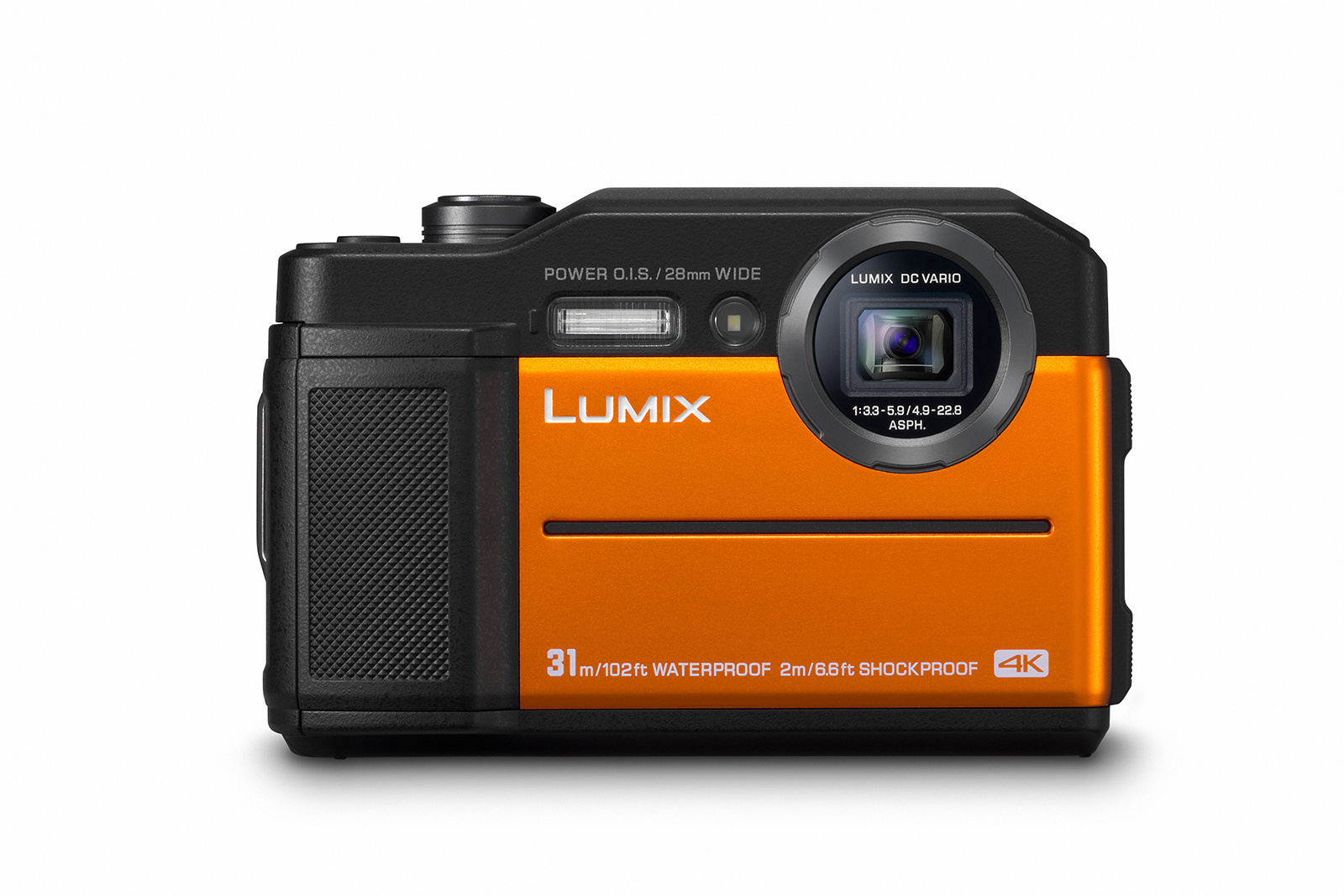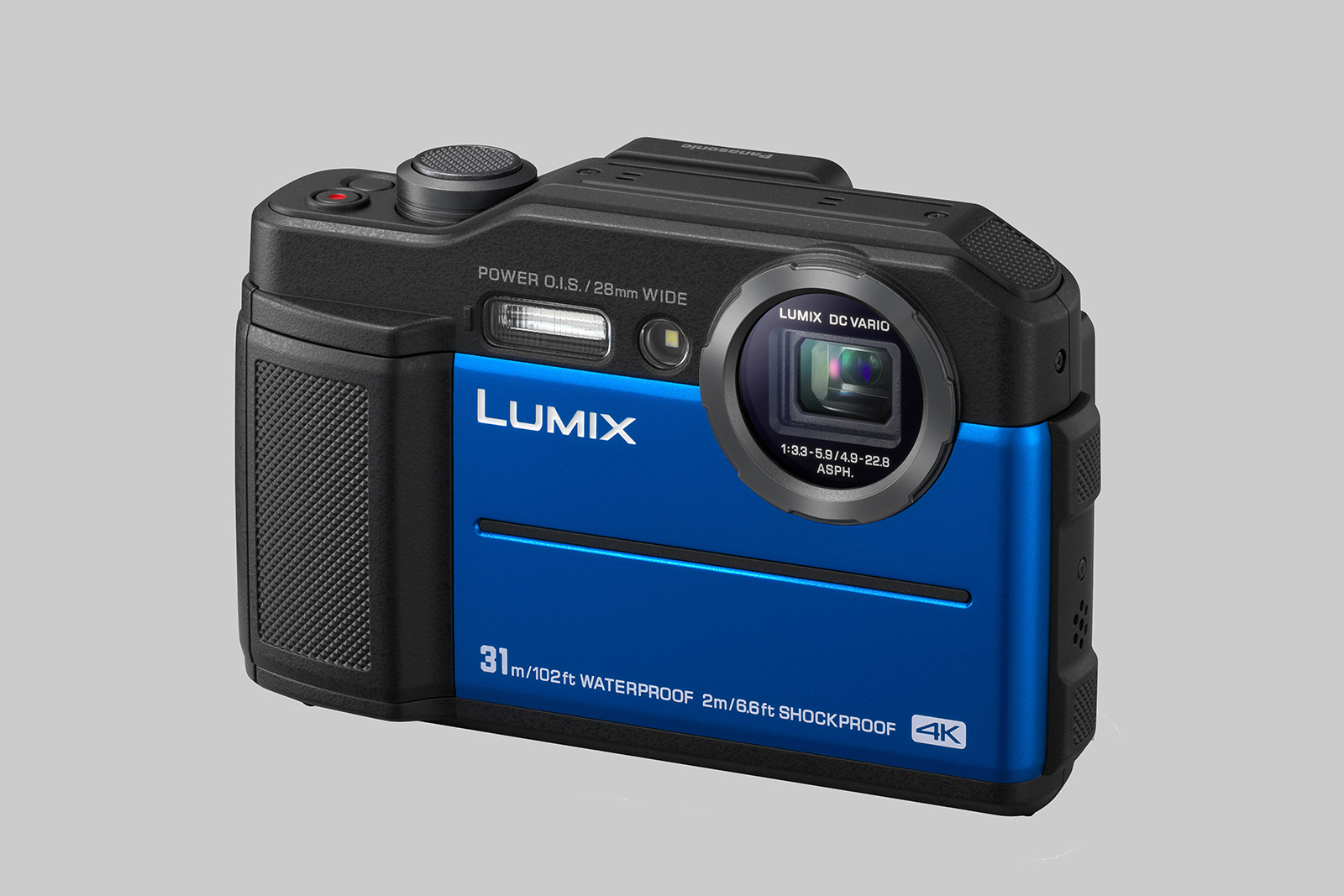Panasonic is taking its rugged camera even deeper — and that’s a good thing. Panasonic has announced the Lumix TS7, a rugged compact that ups both the megapixels and depth rating while adding 4K.
The TS7 body deviates from Panasonic’s earlier rugged compact body styles, but the change isn’t just for looks. The Panasonic Lumix TS7 is rated to dive down as deep as 102 feet underwater, a big jump from the TS6’s 43-foot depth rating. The camera is also rated for 6-and-a-half-foot drops, 220 pound-feet of pressure, and temperatures down to 14 degrees.
While viewfinders are becoming rare on compact cameras, Panasonic managed to slide one in above the three-inch, 1,040 dot LCD screen. While that new electronic viewfinder is just .2 inch of an in size, it packs 1,170K dots and creates a more significant bump at the top of the camera. The shutter release also now protrudes from the camera further, which is probably a change to help when shooting with gloves. Switching between the viewfinder and LCD screen isn’t automatic, with a button to swap between the two shooting options.
The changes from the now three-year-old TS6 continue inside the camera, where Panasonic has equipped the compact with a 20.4-megapixel sensor. The camera also steps up to 4K video at 30 or 24 frames per second in the MP4 format, while shooting in HD offers up to 120 fps for slow-motion videos. Time lapses and stop-motion modes are also built-in. Like other newer Panasonic cameras, the TS7 also packs in 4K photo modes, including a post focus mode to change the focus of the shot later, a 30 fps mode in a reduced eight-megapixel resolution , and a
At full resolution, the TS7 shoots at up to 10 fps with a fixed focus and an 11 shot buffer, or at 5 fps in continuous focus mode. Panasonic also says the autofocus is quick thanks to Light Speed AF but doesn’t detail just what tech goes into that autofocus system.
A 4.6x optical zoom lens allows for more flexibility. Panasonic also built in Power OIS stabilization, which works for both stills and video.
The TS7’s iAuto mode is designed for beginners, while the camera’s built-in LED light can be used to compose the shot even when photographers want the light off for the actual shot. Wi-Fi, a compass, and an altimeter are also included. GPS isn’t built-in, but geotagging is possible using the app and Wi-Fi.
The Panasonic Lumix TS7 is slated to arrive in early summer with a $450 list price. The camera will be available in blue, orange, and black.






